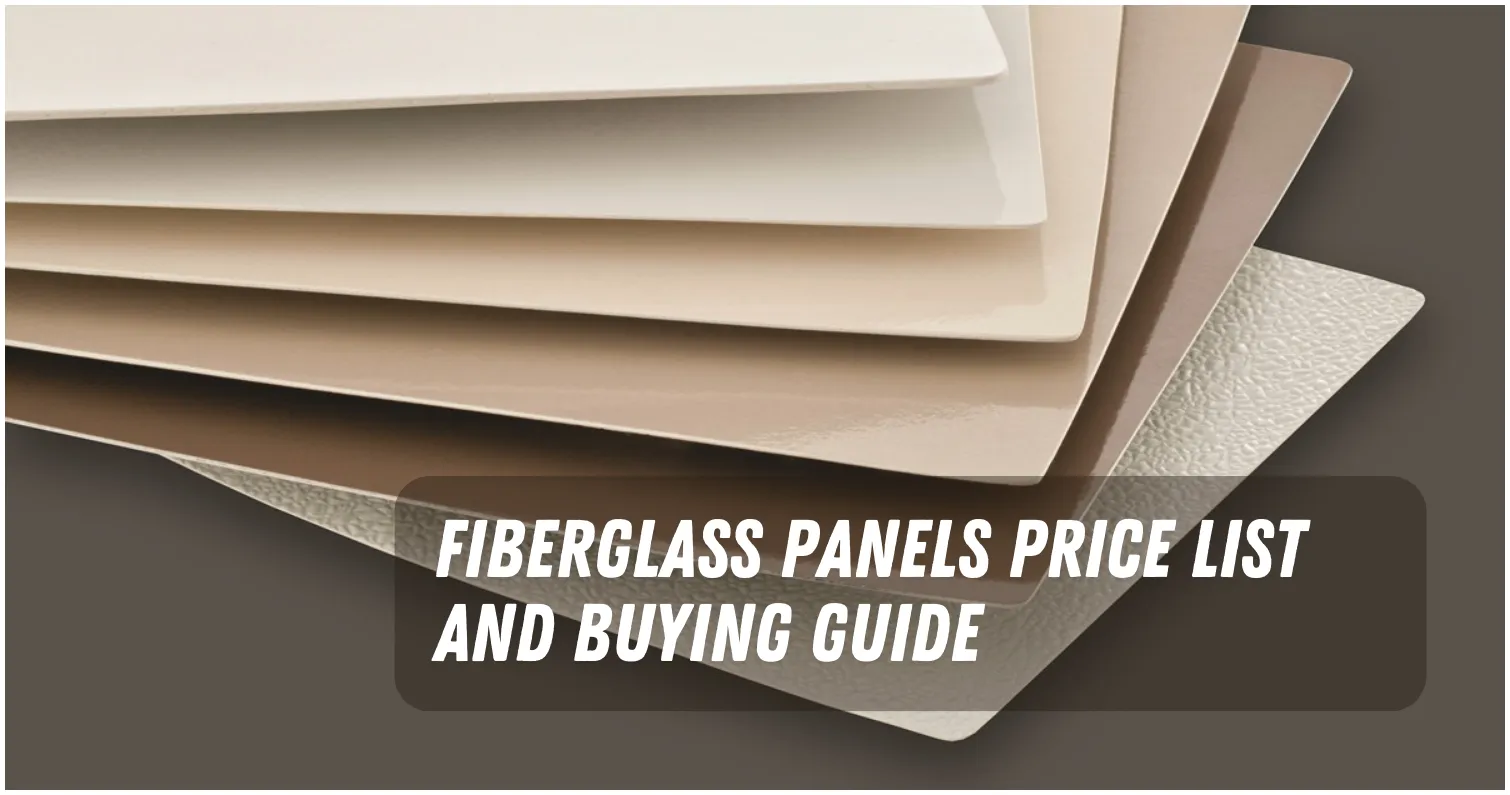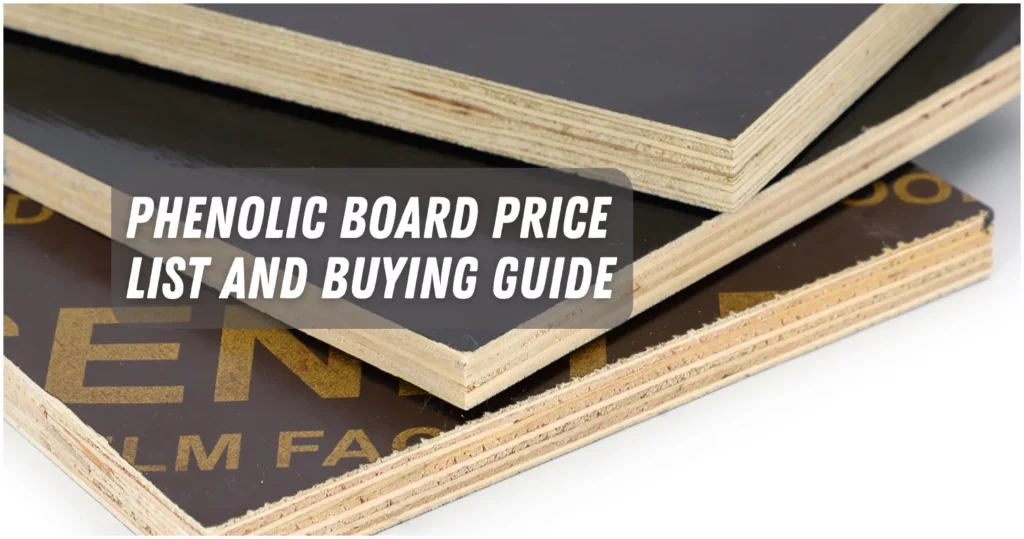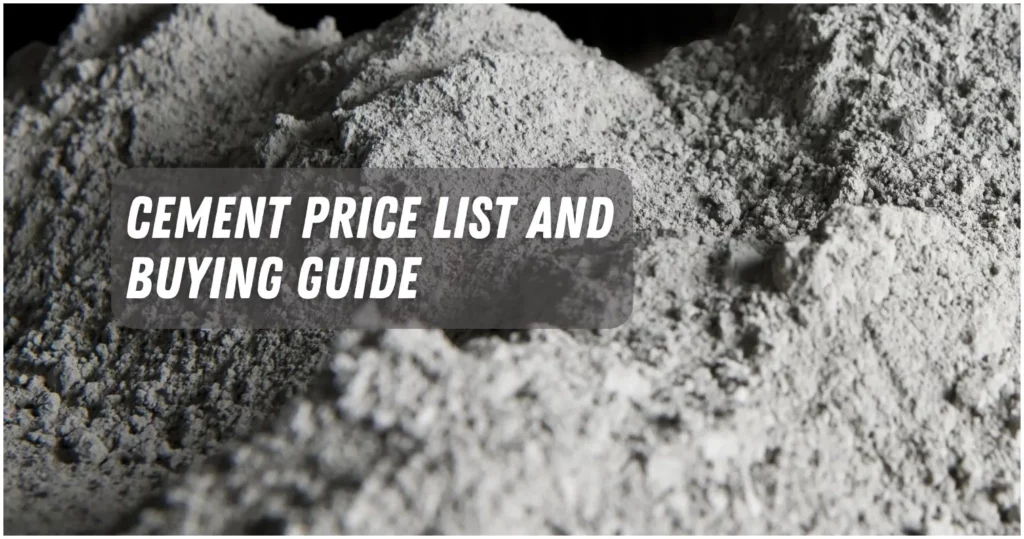Fiberglass panels might be a good choice if you want a durable, lightweight, and versatile roofing material at a reasonable price.
Glass fibers are woven into a resin matrix to make fiberglass panels. This makes a strong, flexible sheet that can be used for many different things.
Polylite Industrial Corporation’s fiberglass panels range in price from ₱63 to ₱252 per square foot on average.
In this article, we’ll talk about what fiberglass panels are, their uses, types, pros and cons, and the price list for fiberglass panels in the Philippines.
What is Fiberglass Panels?

Fiberglass sheets and fiberglass reinforced plastic (FRP) panels are two other names for fiberglass panels.
They are made of glass fibers that are either woven together or spread out in a random pattern and held together with a thermosetting resin.
Depending on the desired properties and performance of the panel, the resin can be polyester, epoxy, vinyl ester, or phenolic.
Fiberglass panels are better than other roofing materials like metal, wood, or concrete in many ways.
They are light, resistant to corrosion, fire, impact, UV rays, and weather, and they don’t rust or burn.
They are also good at insulating heat and sound, and they are easy to shape into different shapes and sizes.
Fiberglass Panels Uses

Fiberglass panels can be used for a wide range of applications, such as:
Roofing
Fiberglass panels can withstand harsh weather, provide natural lighting, and reduce the need for artificial lighting and cooling systems, making them ideal for roofing.
They can be changed to fit any design and work on both flat and corrugated roofs.
Cladding
Fiberglass panels add color, texture, and finish to walls, ceilings, floors, and partitions.
They also make the building safer from fire and make it warmer and quieter.
Greenhouse
Fiberglass panels allow optimal sunlight transmission and diffusion for plant growth in greenhouses.
They also keep pests, diseases, and extreme temperatures from hurting plants.
Industrial Use
In factories, warehouses, and labs, fiberglass panels provide insulation, ventilation, corrosion and chemical resistance, and electrical insulation at low cost.
They can handle high temperatures and pressures, which makes them good for applications that are tough.
Flooring and Decking
Fiberglass panels make strong, slip-resistant surfaces for floors and decks that are also resistant to stains, scratches, and abrasions.
Partitions and Ceilings
Fiberglass panels are used to make walls and ceilings in offices, schools, hospitals, and other indoor spaces. These walls and ceilings help keep noise out and prevent fires.
Doors and Windows
Fiberglass panels are used to make doors and windows that are light, durable, and save energy. They also protect against UV light and have safety features.
Type of Fiberglass Panels

Fiberglass panels come in various types, each with specific features for different applications:
- Flat: Simple, smooth panels that are all the same thickness and can be used for roofing, siding, and flooring.
- Corrugated: Panels with a wavy surface that makes them stronger and more rigid. They are most often used for roofing.
- Embossed: Decorative cladding made of panels with textured surfaces that look like wood or metal.
- Translucent: Semi-transparent panels that let natural light through and are great for roofs and greenhouses.
- Opaque: Panels that are not see-through and provide privacy and security. They are often used for cladding and dividing rooms.
- Multi-wall Sandwich: Panels made of multiple layers of fiberglass separated by air spaces. These panels are better at keeping heat in and preventing damage from impacts.
Fiberglass Panels Price List

The price of fiberglass panels in Philippines depends on several factors, such as the type, size, quantity, quality, supplier, and location of the buyer.
The following table shows some of the average prices of different types of fiberglass panels.
| Type | Size | Thickness | Color | Price (per square foot) |
|---|---|---|---|---|
| Flat | N/A | 1.0 mm | Clear | ₱69 |
| Flat | N/A | 1.5 mm | Clear | ₱103 |
| Flat | N/A | 2.0 mm | Clear | ₱138 |
| Flat | N/A | 2.5 mm | Clear | ₱172 |
| Flat | N/A | 3.0 mm | Clear | ₱207 |
| Corrugated | 32″ | 1.0 mm | Clear | ₱63 |
| Corrugated | 32″ | 1.5 mm | Clear | ₱94 |
| Corrugated | 32″ | 2.0 mm | Clear | ₱126 |
| Corrugated | 32″ | 2.5 mm | Clear | ₱157 |
| Corrugated | 32″ | 3.0 mm | Clear | ₱189 |
| Corrugated | 42″ | 1.0 mm | Clear | ₱84 |
| Corrugated | 42″ | 1.5 mm | Clear | ₱126 |
| Corrugated | 42″ | 2.0 mm | Clear | ₱168 |
| Corrugated | 42″ | 2.5 mm | Clear | ₱210 |
| Corrugated | 42″ | 3.0 mm | Clear | ₱252 |
Note that these prices are only indicative and may vary depending on the market conditions and availability of the products.
Fiberglass Panels Pros and Cons
Fiberglass panels have many advantages and disadvantages that buyers should consider before purchasing them. Some of the pros and cons of fiberglass panels are:
Pros:
- Lightweight: Materials like metal, wood, and concrete are heavier than fiberglass panels. This makes them easier to move, set up, and take care of.
- Durable: Fiberglass panels don’t rust, burn, break, or wear down over time. They can last for many years without cracking, fading, or getting bent out of shape.
- Versatile: Fiberglass panels can be molded into different shapes and sizes. You can also paint or coat them in different colors and finishes.
- Eco-friendly: Fiberglass panels are recyclable and emit no harmful gases or chemicals. They can also cut energy use by letting in natural light and keeping heat in.
Cons:
- Costly: Compared to metal, wood, or plastic, fiberglass panels are more expensive. To install and fix them, you need special tools and skills.
- Fragile: Fiberglass panels can crack or break when hit hard or put under a lot of stress. Sharp objects or rough materials can also damage them.
- Hazardous: Fiberglass panels can release tiny glass fibers that irritate the skin, eyes, nose, and lungs. They can also catch fire if exposed to high temperatures or sparks.
Things You Should Know about Fiberglass Panels
Before buying fiberglass panels, there are some things that buyers should know to make an informed decision. Some of these things are:
- Are fiberglass panels good?
Fiberglass panels can be used for many things that need to be strong, long-lasting, flexible, and good for the environment. But you should think about the fact that they are expensive, break easily, and could be dangerous. - What is the purpose of fiberglass?
Fiberglass is used to make things that are light, strong, durable, and flexible. Boats, cars, pipes, tanks, furniture, and more are all common uses. - Are fiberglass panels waterproof?
Yes, fiberglass panels are waterproof because they don’t soak up water or moisture. Mold and mildew can’t grow without proper cleaning and maintenance, though. - How long does fiberglass panels last?
With proper installation and maintenance, fiberglass panels can last 20 to 30 years or more. But damage from UV rays, chemicals, or physical wear and tear can happen over time. - How strong are fiberglass panels?
Both the tensile strength and the compressive strength of fiberglass panels are high. They don’t change shape or break when exposed to high temperatures or pressures. - Why is fiberglass better than plastic?
Fiberglass is better than plastic because it is stronger for its weight, stays stable at high temperatures, and doesn’t harm the environment. Plastic, on the other hand, is cheaper, easier to work with, and more common. - Does fibreglass break easily?
Fiberglass doesn’t break easily under normal circumstances, but high stress, impact, surface flaws, or cracks can cause it to break.


